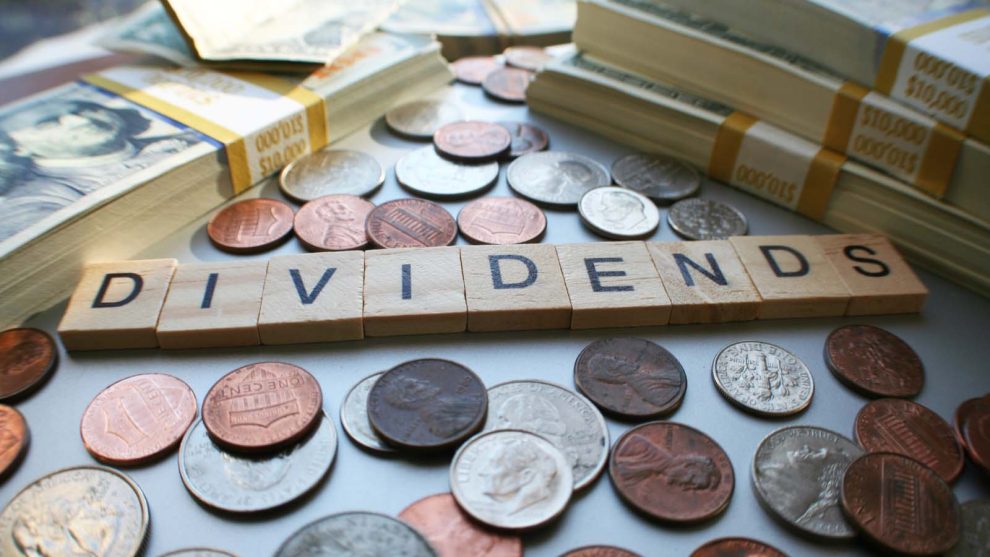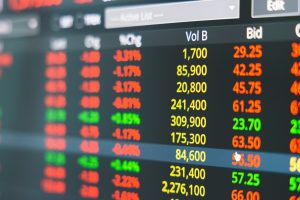When looking for the best dividend stocks to buy now, an excellent place to start is with the Vanguard Dividend Appreciation ETF (NYSEARCA:VIG). It is the largest U.S.-listed dividend ETF with $65.2 billion in net assets.
The ETF tracks the performance of the S&P U.S. Dividend Growers Index, a collection of 314 dividend-paying stocks that have a record of increasing their dividends.
VIG is up 6.5% year to date, underperforming the broader market. However, in 2022, the ETF had a total return of -9.81%, about half the loss of the SPDR S&P 500 ETF Trust (NYSEARCA:SPY). So there’s no question that VIG can deliver a combination of offense and defense. I think dividend stocks, in general, possess this attribute.
When looking for the best dividend stocks to buy, I’m more interested in the dividend growth than the yield. That’s because growth in dividends results from growth in earnings. So, while the best dividend stocks to own don’t necessarily have the highest yields, they’ll make you plenty of money over time.
Below I’ve selected three dividend stocks held by VIG that have grown their annual dividend by roughly 10% or more over the past five years.
Microsoft (MSFT)
Microsoft (NASDAQ:MSFT) certainly isn’t the highest-yielding stock, with a yield of 0.8%. Yet, it has a history of steadily increasing that payout, most recently raising its quarterly dividend in late 2022 by 9.7% to 68 cents a share. Its five-year dividend growth rate also clocks in at 9.7%, and the company has increased its dividend for 13 years straight.
Despite its relatively low yield, MSFT is the No. 1 holding in VIG, accounting for 4.5% of the fund’s assets. The company paid $18.1 billion in dividends in fiscal 2022 (June year-end), 9.8% higher than a year earlier. This was despite repurchasing nearly $71 billion of its stock over the past three fiscal years.
SeekingAlpha contributor Tradevestor is forecasting the company will up its dividend by another 10% in September, with a new quarterly payout of 74 cents to 75 cents per share, which would push its yield closer to 0.9%.
“[D]o not underestimate the power of growing dividends even when the starting yield appears low, as long as the dividend growth remains strong (read compounding effect) and the dividend coverage looks good,” Tradevestor writes, noting that Microsoft has both factors working in its favor.
In addition to being one of the best dividend stocks to buy, MSFT should be attractive to investors looking to benefit from artificial intelligence (AI) and cloud computing trends.
Bernstein analyst Mark Moerdler believes Microsoft’s push into AI could vault it past Amazon (NASDAQ:AMZN) into the top spot in cloud computing. According to Barron’s:
“AI at Microsoft is far more than Bing Chat,” Moerdler writes. “It is becoming core technology everywhere and in everything that Microsoft does.” The analyst estimates AI software touches products that account for more than 42% of Microsoft’s revenue…
In January, Microsoft announced it was investing $10 billion in OpenAI, the creators of ChatGPT. Since then, the stock is up 46%. Can you say, “Activision Blizzard (NASDAQ:ATVI), who?”
Costco (COST)
Costco (NASDAQ:COST) also has what some might consider to be an unimpressive dividend yield of 0.8%. But, again, dividend growth is more important than yield. On April 19, the membership-only warehouse club announced a 13.3% quarterly dividend increase to $1.02 a share.
Costco has a five-year dividend growth rate of 12%, and the company has increased its dividend for 19 years in a row. In addition, it sometimes pays a special dividend. For instance, in December 2020, shareholders were treated to a $10-a-share one-time payout.
COST is the 15th largest holding in VIG, accounting for 1.7% of the fund’s assets.
The argument against buying Costco stock is that it’s expensive. It trades at 1 times sales and 23.8 times cash flow, higher than its five-year averages. However, the detractors fail to point out that Costco has the finest business model in retail. No one can beat it, except perhaps LVMH (OTCMKTS:LVMUY), but it’s at an entirely different price point.
Morningstar Canada Senior Editor Andrew Willis recently discussed the pros and cons of investing in Costco. One point stood out to me:
Investors in Costco should take comfort in the power of the brand and structure it has built, having just been through quite a few challenges in the last decade and a half. From a financial crisis to the emergence of digital retail to two meaningful fee increases for Costco members, the company has proven its lasting power with membership renewal rates still around 90%.
As long as Costco retains members, monthly same-store sales figures don’t matter as much. As Willis points out, membership fees account for about 55% of its earnings. So it can afford a bad month or two, having collected $4.2 billion in membership fees in fiscal 2022, 9% higher than in fiscal 2021.
Texas Instruments (TXN)
Texas Instruments (NASDAQ:TXN) increased its quarterly dividend by 8% with the November payment to $1.24 a share for a healthy 2.8% yield. This marked the company’s 19th consecutive year of dividend increases. TXN is the 24th largest holding in VIG, accounting for 1.2% of the fund’s assets, and has a five-year dividend growth rate of 17.1%.
As semiconductor companies go, Texas Instruments is not the most glamorous, making analog chips, embedded processors and even electronic calculators. Who could forget the TI-35? Of course, its calculator revenue is a tiny piece of its business. In 2022, it accounted for just 2% of Texas Instruments’ $20.03 billion in revenue.
The company focuses on capital allocation. As a result, it reports information each quarter, such as cash generation, free cash flow as a percentage of revenue and cash return to shareholders. In Q1, its cash flow from operations on a trailing 12-month basis was $7.74 billion, 15% lower than in the same period a year earlier. In addition, its capital expenditures were 28% higher at $3.34 billion, cutting its free cash flow by 32% to $4.4 billion. However, despite the drop in free cash flow, it still accounted for 22.6% of revenue.
As for cash returned to shareholders, dividends accounted for 58% of the $7.49 billion total in the trailing 12 months, with share repurchases accounting for 42%.
Analysts are mixed about its stock. Of the 31 who cover it, only 10 have an “outperform” or “buy” rating, with an average target price of $183.20, 4% higher than its current share price. However, on June 13, Susquehanna analyst Christopher Rolland reiterated his positive rating on TXN stock and $205 price target, which is nearly 15% above the current share price.
On the date of publication, Will Ashworth did not have (either directly or indirectly) any positions in the securities mentioned in this article. The opinions expressed in this article are those of the writer, subject to the InvestorPlace.com Publishing Guidelines.





